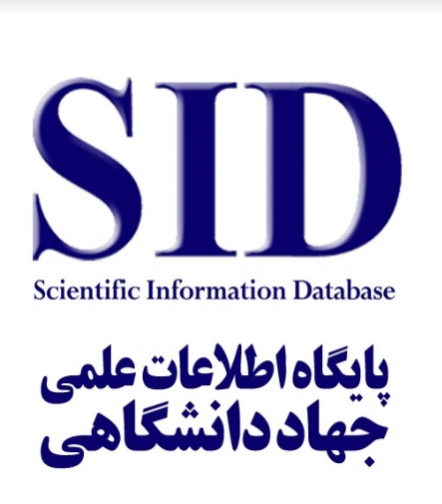Developing a Risk-Adjusted Optimal Bank Balance Sheet Model
Keywords:
Risk, Balance Sheet, Government and Private Facilities, Bank Profitability, FinancingAbstract
The objective of this study is to present a framework for the optimal balance sheet of banks while incorporating risk considerations. The research utilizes data from banks’ financial statements, including the balance sheet and the profit and loss statement, for the years 2022 and 2023. First, the modeling of balance sheet items is conducted; then, the relationships between balance sheet items—such as government and private facilities, overnight facilities, and investments—and profit and loss indicators, as well as the relationships between balance sheet items and their associated risks, are examined. The risks considered in this study include credit risk, operational risk, market risk, and liquidity risk. Finally, optimization of the equations is performed based on maximizing bank profitability and reducing risk, taking into account financial and compliance constraints. This model assists banks in achieving the highest possible returns from their assets while mitigating risks. At the same time, the model improves and reforms banks’ balance sheets, enabling more effective and efficient financing of enterprises by banks.
Downloads
References
Darabi, R., & Molaei, A. (2011). The effect of liquidity transformation, inflation, capital preservation, and gross domestic product on the profitability of Bank Mellat.
Deng, L., Lv, Y., Liu, Y., & Zhao, Y. (2021). Impact of fintech on bank risk-taking: Evidence from China. Risks, 9(5), 99.
Di, L., Yuan, G. X., & Zeng, T. (2021). The consensus equilibria of mining gap games related to the stability of Blockchain Ecosystems. The European Journal of Finance, 27(4-5), 419-440.
Esmaeilzadeh, A., & Amiri, H. (2015). Review of modern financing instruments and practical strategies for their implementation in Bank Tejarat. Financial Economics (Eghtesad-e Maliy), 9, 11–19.
Fuster, A., Plosser, M., Schnabl, P., & Vickery, J. (2019). The role of technology in mortgage lending. The Review of Financial Studies, 32(5), 1854-1899.
Ghasemian, A. (2014). Financing small and medium-sized enterprises. Iran Chamber of Commerce, Industries, Mines, and Agriculture – Deputy of Economic Studies.
Gomber, P., Koch, J. A., & Siering, M. (2017). Digital Finance and FinTech: current research and future research directions. Journal of Business Economics, 87, 537-580.
Hofmann, E., Strew, M. U., & Bosia, N. 2018. Supply Chain Finance and BlockchainTechnology the Case of Reverse Securitisation. Springer, Berlin.
Hu, D., Zhao, S., & Yang, F. (2022). Will fintech development increase commercial banks' risk-taking? Evidence from China. Electronic Commerce Research, 1-31.
Karami, A., & Esmaeil Pourmoghadam, H. (2024). The effect of banking financial technology on financial stability in Iran’s banking industry. Stable Economy (Eghtesad-e Basabat), 5(2), 123–150.
Kouhi Lilan, B., Dabbagh, R., Keyalhosseini, S. Z., & Rahbar, F. (2021). Examining the impact of factors affecting the stability of the banking system in selected MENA region countries. Development and Capital Journal (Tose’e va Sarmaye), 6(1), 1–18.
Li, C., He, S., Tian, Y., Sun, S., & Ning, L. (2022). Does the bank’s FinTech innovation reduce its risk-taking? Evidence from China’s banking industry. Journal of Innovation & Knowledge, 7(3), 100219.
Mirzaei, L., Abbasi, E., & Tarahomi, F. (2023). Examining the factors affecting the financing of small and medium-sized enterprises in the Tehran Stock Exchange. Asset Management and Financing (Modiriat-e Darayi va Tamin-e Maliy), 11(2), 95–114.
Mosleh Shirazi, A. N., & Khalifeh, M. (2017). Simulation and policy-making of internal and external financing problems for small and medium-sized enterprises using a system dynamics approach. Asset Management and Financing (Modiriat-e Darayi va Tamin-e Maliy), 5(2), 69–92.
Mostafazadeh, A. (2015). Financing model for small and medium-sized enterprises: An analysis of the concept and importance of financing SMEs. Islamic Consultative Assembly Research Center, Office of Economic Studies.
Nie, Z., Ling, X., & Chen, M. (2023). The power of technology: FinTech and corporate debt default risk in China. Pacific-Basin Finance Journal, 78, 101969.
Panos, G. A., & Wilson, J. O. (2020). Financial literacy and responsible finance in the FinTech era: capabilities and challenges. The European Journal of Finance, 26(4-5), 297-301.
Radfar, M. R., Karimkhani, M., & Aliqoli, M. (2020). Examining the relationship between bank size and capital with systemic risk in banks listed on the stock exchange. Financial Management Strategy (Estrateji-ye Modiriat-e Maliy), 8(1), 163–176.
Rahimi, R., Sarraf, F., Jafari, M., & Safavi, B. (2013). Implementation of fintech technologies and systemic risks in the banking network.
Rohani Rad, S. (2020). Fintech: Research in Iran and the world. Quarterly Journal of Science and Technology Policy (Faslname-ye Siyasat-e Elm va Fanavari), 10(1), 75–94.
Suryono, R. R., Budi, I., & Purwandari, B. (2020). Challenges and trends of financial technology (Fintech): a systematic literature review. Information, 11(12), 590.
Thakor, A. V. (2020). Fintech and banking: What do we know? Journal of financial intermediation, 41, 100833.
Wang, X., Cao, Y., Feng, Z., Lu, M., & Shan, Y. (2023). Local FinTech development and stock price crash risk. Finance Research Letters, 53, 103644.
Zhao, J., Li, X., Yu, C. H., Chen, S., & Lee, C. C. (2022). Riding the FinTech innovation wave: FinTech, patents, and bank performance. Journal of International Money and Finance, 122, 102552.
Downloads
Published
Submitted
Revised
Accepted
Issue
Section
License

This work is licensed under a Creative Commons Attribution-NonCommercial 4.0 International License.


